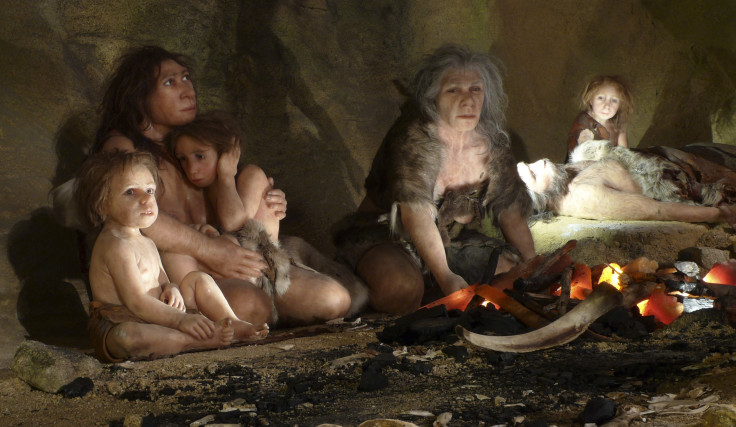Neanderthals’ Ancient Ritual For The Dead: 50,000-Year-Old Skeleton Suggests Early Humans Buried Their Dead

The remains of a Neanderthal, the forerunners to modern humans, discovered in France have suggested that the ancient beings intentionally buried their dead, and had a greater capacity for reverence for their elders than previously thought, according to a study conducted by an international team of archaeologists.
The findings, which appeared in the journal Proceedings of the National Academy of Sciences on Monday, are based on 13 years of research at an excavation site in southern France, and confirm that the burials took place in Western Europe at least 50,000 years prior to the arrival of modern humans.
“This discovery not only confirms the existence of Neanderthal burials in Western Europe, but also reveals a relatively sophisticated cognitive capacity to produce them,” William Rendu, the study’s lead author and a researcher at the Center for International Research in the Humanities and Social Sciences (CIRHUS) in New York, said in statement.
The burial pit was first discovered in 1908 at La Chapelle-aux-Saints in southwestern France, containing the skeleton of a man with spinal deformities. The well-preserved bones led to an initial misinterpretation that later gave rise to the popular legend of the slow, hunched and shuffling Neanderthal, AFP reported.
However, beginning in 1999, Rendu and his team made a more careful analysis of the burial site and began excavating seven other caves in the area. The research, which concluded in 2012, unearthed more Neanderthal remains, suggesting that the pre-historic humans showed respect for their elders and were more caring than previously thought.
Although archaeologists did not find tool marks or other evidence of digging where the initial skeleton was unearthed, geological analysis of the depression in which the remains were found suggests that it was not a natural feature of the cave floor.
“The pit does not have any natural origins, it doesn't fit with any natural phenomenon. The only other explanation is a human origin,” Rendu said.
In addition, further analysis of the remains revealed that they contained few cracks, no smoothing due to weather, and no signs of disturbance by animals.
“The relatively pristine nature of these 50,000-year-old remains implies that they were covered soon after death, strongly supporting our conclusion that Neanderthals in this part of Europe took steps to bury their dead,” Rendu said. “While we cannot know if this practice was part of a ritual or merely pragmatic, the discovery reduces the behavioral distance between them and us.”
© Copyright IBTimes 2024. All rights reserved.






















